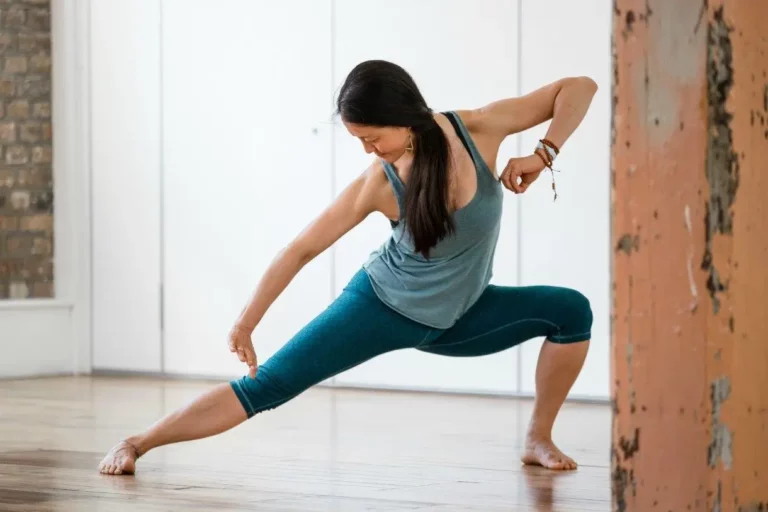Enjoy this excerpt from John Stirk’s book The Original Body, and join John for his workshop of the same name tomorrow in Camden. What lies beneath, an altered state, an alternative consciousness, a variation in behaviour, more love?
What lies beneath, an altered state, an alternative consciousness, a variation in behaviour, more love?
Regardless of personal history, we are all suitable candidates for change. If you are reading this, you are working with the physical aspect of yoga, have an interest in the philosophy, and are aware of permutations on other levels. Changing the body changes how we are.
At first the changes can be extraordinary. The centring, grounding, release of tension and increased sensitivity touches us all levels.
It begins and ends with our self.Yogis were self-interested, proposing that the self was illusory and open to transcendence. In reality we are never free from self-interest because the process of yoga demands the practice of passing through our ever present self. All experience is self-experience. We are always ‘there’; even when we are ‘out of our heads’ a part of us recalls the experience.
Selves arise out of living tissue; working with tissue has a direct and accumulative effect on the self. This is obvious through personal experience and a well-established fact in the body-mind world. As body work does its job, the neocortex loses its grip. Changes to behaviour, temperament and understanding are par for the course.
An original self is not free from cortical presence, but has a mature relationship with it. We draw from subcortical activity learning from ancient rhythms untouched by agenda. The older and the more recent aspects are intimately connected, inseparable, and belong to the same organic fabric. The brain, from bottom up is a continuum. Wiping the physiological slate clean gives a sense of freedom from ourselves at the time. Can an original self arise out of an original body? Deeper patterns dissolve in the wake of original physical experience but we must be present to have the experience.
When we ‘surrender’ to the body and give over to primal movement, when we have gone, a familiar self springs back, as if on a piece of elastic. We are an ever present polarity between our habitual and original self. Time spent has an accumulative effect and we do recognise the changes.
Originally there was no self, the organism is original. The intention is not to lose consciousness, but to drop habitual thought in order to absorb the unconditioned freedom of spontaneous movement. Is there an organic self that lies dormant regardless of practice and sometimes in spite of it? Does revealing this self, enhance positive changes in behaviour, understanding and relationship? John is one of the UK’s leading yoga teachers and his work has been evolving over a 38 year period. He taught remedial classes at the Royal Academy of Dance and lectured in biomechanics and practical osteopathy at the college of Osteopaths in London. He has been influenced by the work of R.D. Laing of whom he was a student and ran Body/Mind workshops for many years and Vanda Scaravelli, with whom he had personal tuition for several years. Other influences include the work of Moshe Feldenkrais, J. Krishnamurti, Ida Rolf, John Wernham, William Sutherland and Emilie Conrad. John has published several books, notably ‘The Original Body’, and numerous magazine articles, ran teacher training courses and teaches around the UK and internationally. John’s predominant inspiration arises from an on-going investigation into the relationship between the quality of our patterns of movement and our way of being. His work, while blending Eastern and Western approaches to health and personal growth, continues to evolve as a consequence of creative exploration in the moment.
John is one of the UK’s leading yoga teachers and his work has been evolving over a 38 year period. He taught remedial classes at the Royal Academy of Dance and lectured in biomechanics and practical osteopathy at the college of Osteopaths in London. He has been influenced by the work of R.D. Laing of whom he was a student and ran Body/Mind workshops for many years and Vanda Scaravelli, with whom he had personal tuition for several years. Other influences include the work of Moshe Feldenkrais, J. Krishnamurti, Ida Rolf, John Wernham, William Sutherland and Emilie Conrad. John has published several books, notably ‘The Original Body’, and numerous magazine articles, ran teacher training courses and teaches around the UK and internationally. John’s predominant inspiration arises from an on-going investigation into the relationship between the quality of our patterns of movement and our way of being. His work, while blending Eastern and Western approaches to health and personal growth, continues to evolve as a consequence of creative exploration in the moment.










